Prof. Arthur LaBrew, Musicologist
C
Cabanga, Antonio Lucango a.k.a. Sayago (1801-)
Bugler. Reputedly born of royal family in Lucango on the West Coast of Africa, his father named Chief Lucango Cabanga and his mother Joanna Quicolo; he was christened as a Portuguese-African citizen; at age ten served aboard the warship Prompidao under the command of José Clemente Guimaraens Silva da Costa at the time it arrived at Montevideo in 1811; “with the passage of time” he was known as Antonio Sayago. After being employed by Julian Conplace, at age 38, he eventually joined the army and promoted to sergeant in Battalion No. 2 of the National Guard under the command of Colonel José María Muñoz and for nine years fought in the army. After peace came, he joined the band of the Regimiento de Artillerie as a bugler and married Eujenia Rivera, daughter of Aunt Catalina Vidal (morena de campanillas). To this union seven sons and fourteen daughters were born; in 1859 he visited his father, his mother being deceased, but returned to Montevideo about the middle of 1860; he sought employment by distributing advertisements with the help of his bugle; he was especially fond of playing the Marseilles and a march of Garibaldi; circuses and theatres used his services and he even advertised in publications at Buenos Aires; bullfights were also among his activities. A full range of activities are unexplored.
[Diggs; Crisis October, 1955, pp. 471f. ]
Cable, Theodore (1892-1963)
Violinist. Son of George W. and Mary E. Born in Kansas but moved to Indianapolis, Indiana where his mother taught public school. He was admitted to the Harvard University College Musical Society. Married Wilhelmina Morris (1920) and maintained a dental shop in Indianapolis.
Indianapolis 1900 ED 89 3A; 1910 and 1930; Crisis (Nov, 1910), p.6]
Cabrera, Gregorio (1764fl.)
Music maestro; violinist, sastre.
[Lange Convento]
Cabrera, Joseph (1764-1785fl.)
Music maestro; harpist; occupation was a médico, barbero and sangradow.
[Lange Convento]
Cabrera, Manuel Antonio (17??-)
En 1776 se cita en el Libro de Gastos un pago al Dominico Fray Joseph Priego, por enseñar a tocar el Organ a “Manuel Antonio, Esclavo.” En 1800 elevó su pedido de libertad est Manuel Antonio Cabrera. Pardo de Condision esclavo de este Comvento de la observan si a Ne. N. Serafico P. San Francisco . . . y sirvo en loc oficios de Organista y Carpintero del Convento . . .
[Lange Convento, p. 10]
Cabrere, Miotilde (1852/3 -)
Born in Louisiana; age in 1880 is 28 and she is a music teacher; lives with mother of same name; in 1872 father Jean, mother Charlotte; brothers are Horatio and Eugene; city directory of 1882 is a music teacher residing at 428 St. Ann; in directory of 1890 is listed Cabree, Charlotte, widow of Morose residing at 428 St. Ann. Still alive in 1900, occupation a seamstress, her date of birth reads January 1853, married at age 27 and 4 of seven children survive.
New Orleans 1880 Wd. 5, ED 39, p. 302, 365 St. Ann; Freedmen’s Savings and Trust Co., application 7942, dated August 13, 1873 residing at 132 Bienville; New Orleans 1900 ED 51 10B.
Cadena y Herrera, José Onofre Antonio de (1700s-)
Native of Trujillo in northern Peru he was an unsuccessful candidate for the director of music in the Trujillo Cathedral; he cited his race as counting against him; his Cartilla Musica (published at Lima and preserved in the Archive of the Indies, 1765), discusses musical problems as root positions and inversion above unfigured basses, etc, etc. In Example 3, he uses the Guidonian method of transposing (the moveable vt, re, mi system) and in Example 4, uses the fixed “do” position. At Example 8, he shows 3 examples of “do, re, mi” in which the interval distances are the same using the white notes of the piano scale. At Examples 11-13, he shows the proportional signs used in older chant signatures and in the bottom example demonstrates the proper way of stemming notes to avoid using ledger lines.
Works
Dialogo Cathe-músico que pertence a cantar (published in Lima in 1763)
[Guillermo Lohmann Villena in Revista de Indias, XIX/76 (Madrid, 1959, 223-225; Stevenson “Some Portuguese Sources” in Anuario (1968), p. 14ff.]
Caesar (1750)
Hymn singer. When he ran away from his master, Japhet Chapin, he stood about 5’; he somehow managed to get a Bible and Watt’s Psalms & Hymns from which he possibly learned his words and tunes; reward of $6 was offered.
[Connecticut Courant April 21, 1777; Springfield, Massachusetts; LaBrew BMCP]
Caesar (1752)
Fife player of Phillip Wilson; said to be born in Jamaica where he lived with one Thomas and James Lucas (and company) of the Grenades until about 1766; he was then sold to one Captain Godfrey McDonnel who consequently sold him to one James Wallace of Philadelphia in 1767; as a fifer he was fond of playing scraps of tunes and had several [fifes] in his possession; ran away while with his master in Philadelphia; a 4 Pound reward was increased to 5 in subsequent notices with an additional 10 Pounds reward for the person who took him away; was inclined to laugh, and when he did, showed “much of his gums and teeth;” was noted as being “talkative and impertinent, with often an elevated voice, where he dares to make free, is insolent, and ready to box amongst his companions, and is fond of playing scraps of tunes on the fife;” he had taken a Bristol pipe box, about two feet and a half long; thought to have been headed back to the West Indies.
[Pennsylvania Journal‑Gazette & Advertiser July 4; December 19, 1774; Pennsylvania Gazette July 16 & November 2, 1774; LaBrew BMCP]
Caesar (1754)
Fifer/drummer. Ran away from Samuel Jackson November 13, 1776; described as about 5’ 3”; smart, polite and likely well made fellow; thought to have gone toward the military camp as he was fond of being a fifer or drummer; would try to pass as a freeman; reward of $20 offered.
[Pennsylvania Gazette November 20, 1776; LaBrew BMCP]
Caesar (1758)
Fiddler. Born ca. 1758; ran away on May 19, 1782 from Jacob Weaver; about 5’ 8” or 9”; “has lost one of his upper teeth before and remarkable long hair;” Caesar kept his hair tied behind in a que could talk both the Dutch and English; was thought to have a white woman with him who posed as his wife; “he is a great fidler.”
[Pennsylvania Gazette & Weekly Advertiser June 5, 1782 item dated May 24, 1782; Amity Township, Berks County, Pennsylvania; LaBrew BMCP]
Caesar (1761)
Fife & fiddle. Born ca. 1761, ran away from the Subscriber, last Monday, a mulatto, about 23 years of age. He had on when he went away, a blue cloth jacket, a pair of oznaburg trousers, country made shoes, oznaburg shirt and a felt hat. He is about 5 feet 10 inches high, when he laughs, there is two of his teeth which shew farther out than the others, has been shot in the calves of his legs and the back part of his thighs, the marks of which, on examination, are plainly to be seen, has a small scar over his left eye, a down look when spoken to and is a very cunning artful fellow, plays on the fife and fiddle, and once enlisted as a soldier, and may probably endeavor to pass himself for a free man. Any person that will bring him to me, living in Colchester, Fairfax County, Virginia, or secures him in gawol, so that I may get him again, shall receive the above [$10] Reward, and reasonable charges if brought home. William Lidsay
[Baltimore Maryland Journal & Baltimore Advertiser May 4, 1784; LaBrew BMCP]
Caesar (1763)
Violinist. Bedford County, Virginia, on the South Side James River, January 11, 1790. Born ca. 1763, he ran away with his brother, Jack (see below), from William Bosham’s, in Bedford County on the 26th of September last, a sensible, likely, stout, well‑set black fellow, about twenty‑seven years of age, five feet 8 or 9 inches high, has a pleasant countenance, and a small wain(?) on each wrist; had on, when he went away, a Negro cotton hunting shirt, country‑wove breeches mixed with wool, and a calico jacket; reward of 5 pounds each. (Signed) John Hook and William Terry.
[Baltimore Maryland Journal and Baltimore Advertiser, June 8, 1790; LaBrew BMCP]
Caesar (1770fl.)
French Horn. Dates unknown; of South Carolina; played “remarkably well on the French Horn;” escaped early in 1770.
[South Carolina Gazette April 19, 1770; B13; S29; LaBrew BMCP]
Caesar (1814ca.-)
At age 25 he ran away on Friday/Sat. May 4-5th, 1839 from the steamboat Meridian; was 5’11” of good countenance; speaks well and also reads and writes and plays on the violin; owners Norris and Boykin, Mobile, M. Alexander, Portland, Dallas Co., Alabama.
[Daily Picayune, June 22, 1839
Caesar, William Herbert (1861-1952)
Born New London, Connecticut, February 15, 1861; was the son of Anson (d. 1894) and Henrietta (d. 1924); married Julia Desant (d. 1954) February 8, 1888; he died in New London, October 21, 1952 and was known as a musician of great talent specifically an organist.
[Brown Black Roots]
Caesar=Tom (175? fl.)
Violinist. Exact dates are unknown; highly rated as a musician, performing at the home of Rev. Mr. Todd where many people came to hear him; also performed at local dances; called the earliest Negro “concert” musician” by some scholars.
[Ballou 7; East Guliford, Connecticut]
Caetano, Joze (1786 fl.)
Tiple, rabeça. Active in the Irmandade de São Jose Homen Pardos in the years 1786, 1787 and 1792.
[Lange Vila Rica]
Cafar (1736 d.)
Trumpeter. Notice reads:
“Wednesday last His Majesty’s Ship Scarborough, Capt. Durell Commander, fell down to Nantasket, and the next Day sail’d with a fair Wind for Great Britain. While the Ship lay below, a Negro Man belonging to Capt. Durell, a well known Trumpetter, called Cafar, having been with others in a Boat to the Light‑house, in their Return, one of the Oars happened to fall over board, which Cafar endeavoured to recover, by jumping in after it, but was entangled in the Eel Grass and drowned..”
[Boston Evening‑Post, July 19, 1736; cited in Music in Colonial Massachusetts, 494]
Cain (1735)
Fiddler of John Steel, V.D.M. and Robert Gibson who ran away July 1, 1765; about 5’ 6”; he took two pair of new shoes and two pair of Silver carved shoe buckles, a ruffled linen shirt; he played on the fiddle and thought to have one with him “as it is missing;” ran away in company with another Negro, PHIL, about 24 years old; reward of 20 shillings offered.
[Pennsylvania Gazette July 11, 1765; Carlisle, Pennsylvania; LaBrew BMCP]
Caldwell, Billy a.k.a. William (18??-)
Appears with comedy of Lew Henry in The Disappointed Coon. Has written 3 new catchy songs which will introduced in the act. Open at Chicgo, December 25.
[Indianapolis Freeman, December 16, 1899]
Caldwell, Lawrence C. (1887-)
Musician.
Works:
Calhoun Plantation Songs (2d.edition, C. H. Thompson & Co., Boston, Mass, 1901, 1907) Collected and Edited by Emily Hallowell. The Calhoun Colored School, Calhoun, Lowndes county, Alabama was founded in 1892.
Gwine to Roll in My Jesus’ Arms, p. 5
O Didn’t It Rain, p. 6
Keep A Inchin’ Along, p. 7
Where Shall I Be When De Firs’ Trumpet Soun’?, p. 8
Done Fou’n My Los’ Sheep, p. 10
Somebody Knocking At Yo’ Do’, p.12
Sister Hannah, p. 13
Go Mary An’ Toll De Bell, p. 14
Thank God I’m In De Field, p. 15
Jacob’s Ladder Long An’ Tall, p. 16
Praying In De Land, p. 17
I’ll Meet You Way Up Yonder , p. 18
Jesus Lock’ De Lion’ Jaw, p.19
Singing On De Ol’ Church Groun’, p. 19
O Who Dat Coming Ober Yonder?, p. 20
I Done Done, p. 21
Roll De Ol’ Chariot Along, p. 22
Wheel In De Middle Ob De Wheel, p. 23
Takes A Little Bit Ob Man To Rock Dan, p. 24
End O’ Dat Morning, p. 25
Tell It, p. 26
Hold Out Yo’ Light, p. 27
What Yo’ Gwine To Do When Yo’ Lamp Burn’ Down?, p. 28
De Blin’ Man, p. 29
He’s Jus’ De Same Today, p. 30
Am I Born To Die?, p. 31
‘Listed In De Field O’ Battle, p. 32
We Are Cimbing Jacob’s Ladder, p. 33
Way Up On De Mountain, p. 34
Calvary, p. 35
I Know My Jesus Loves Me, p.36-37
O Dat Sun Gwine Down, p. 38
Until I Reach-A My Home, p. 39
You’ Got A Right, p. 40
Serving My God, p. 40
Wrastling Jacob, p. 41
Fo De Lord, p. 42
I Done Been Home,. p. 43
Holy Is My God, p. 44
Hear Gabriel Blow In Dat Morn, p. 45
Tall Angel At De Bar, p. 46
My Soul Wants Something Dat’s New, p. 47
Good Lord, Shall I Be De One?, p. 48
O Lord, Write My Name, p. 49
Amazing Grace, p. 50-51
Redeem’, Redeem’, p. 52-53
In De Army, p. 54-55
Band Ob Music, p. 56
So Sad, p. 57
Gwine To Shout All Over God’s Heaven, p. 58
Kind Saviour, p. 59
Hammering Judgement, p. 60
Sorry To Tell, p. 61
John De Bunyan, p. 61
Blin’ Man Lying At De Pool, p. 62
Dat Suite Me, p. 63
All The Way To Calvary, p. 64
Scandalize My Name, p. 65
I Never Intend To Die In Egypt-Land, p. 66-67
Rock Mount Sinai, p. 68
Gwine To Quit All O’ My Worldly Ways, p. 69
Drive Satan Away, p. 70
Walking In God’s Commandments, p. 71
Wasn’t That A Witness For My Lord, p. 72
Sun Shine Into My Soul, p. 73
Give Up The Word, p. 73
I Know The Lord Has Laid His Hands On Me, p. 74
Washington, D. C. 1910 ED 8 sheet 9a: age 22 born in Alabama of Alabama-born parents; as a musician he performs in the theatre; is rooming with ????
Calhoun, William Arthur (1870-)
Non-Graduate of Oberlin Conservatory of Music (1887-91, 1897-99). In 1891, while at Oberlin, he served as pianist for the S. B. Hyer troupe.[1] He was hired as organist for the First Congregational Church Sunday-school (white) and pianist for the YMCA (white); first colored man that held those positions at Oberlin. Instrumental in developing the career of Roland Hayes and many others. He won first prize for the best execution on the pipe organ at the Jamestown Exposition and for many years was the head of the music Department at
Wilberforce University; organist and choir master Union Baptist Church, New York City and affiliated with Local 802 in 1924. Member of the famous Southernaires (1932)
Works
Down in the valley waiting for my Jesus (Handy Bros., 1933)
[Indianapolis Freeman, Census Xenia, Ohio 1900; January 22, 1898; Roland Hayes Collection; DPL MS 784.52 C128]
Caligua, John (1763/66)
Drummer. Birth place unknown when he was recruited for the Hessian von Lengerke Grenadier Battalion, March, 1780; probably John Islands, South Carolina; appointment, February, 1783; separated June, 1783.
[Hetrina Project 4; 1050‑1052; Pension from military March 22, 1818 began April 8, 1818; John Islands, South Carolina]
Calixto
Teacher of reading in Brazil; possible performer on flute; Arthur Orlando reported: “He made an arrangement with my father to teach me to read in return for an ebony flute with silver keys.”[2]
[Freyere (1946), p. 411]
Callado, Joaquin Antonio da Silva (1848-1880)
Born in Rio de Janeiro in 1848 to a family of former slaves; father was bandmaster of a carnival society, the Zuavos; appointed professor of flute at the Imperial Conservatory of Music (1870); began to compose in 1867 “Carnaval de 1867” (quadrille); in 1873 presents “for the 1st time” in a concert the Brazilian Ludu, hitherto considered as “slave music;” participated in Gottschalk’s concerts at the Theatre Gymnasio Dramático (1869).
Works
Quadrilles
Flores de Coração
Mimosa
Maria Carlota
Manuelita
Oque é bom, é bom!
As cinco deusas Souzinha
Pagodeira
Suspiro
Familía Meyer
Ermelind
Carnival de 1867
Mariza Lira
Polkas
Lembranca do Cais da Glória
Olhos de Ana
Polca
Imrpoviso
Duladora (Puladora?)
Desejada
Não digo
Flores Amorosa
Honorata, ultimo suspiro(?)
Policena
Como é bom
Cruzes, minha prima
Mariza Lira
Choros
Perigoso e Chôro
Waltz
A Valsa (Mariza Lira)
Additional
Querida por todos
Iman
Linguegem do Coração (polka)
[Béhague Popular Musical Currents]
Calliwe, John (1770fl. -)
Drummer. May be the same as John Calligua*; recruited by the Hessians in the Braunsweig [=Brownway or Brownsville?], Virginia.
[Hetrina Project; January 5, 1770; LaBrew BMCP]
Calvo, Juan Rodriguez (1564)
Mulatto performer on the clavichord and organ; served for twenty years as organist at the Cathedral de Lima.
[Francisco Curt Lange, La Música Eclesiástica en Córdoba Durante la Dominación Hispánica]
Cambridge (ca. 1740 -)
Violinist/flutist. Exact dates unknown; earliest known black music teacher in the United States; “played well on the flute but not so well on the violin;” his advertisement read: “This is to desire all masters and Heads of Families not to suffer said Negro to come into the House to teach their Prentices or Servants to play, nor any other Accounts;” escaped periodically between 1740 and 1743; signed by James Oliver.
[Boston Evening Post October 24, 1743; NHJ 20f.; B13; SSo ; Boston, Massachusetts]
Cambridge=Abraham Brick (1704 -)
Musical bow(?). Although born in the colonies, he must have come in contact with this African type instrument either in his youth or at some time before 1742 when he escaped his mistress, Hannah Pugh (April); described as about 38 years of age and known in and about Frankford by most people there and in town; “he plays with a crooked stick and a pipe in his mouth a sort of music.”
[Pennsylvania Gazette July 8, 1742; LaBrew BMCP; AAMR II, 74; Frankford, Massachusetts]
Camon, David (1870-)
Prof. of music.
Census New Orleans 1910
Camp, Camille (1819)
Born in Louisiana; mentioned as a musician in the orchestra of the Theatre Marigny of 1838/40.
New Orleans 1850, 3d Municipality, p. 193; Trotter, p. 252; in city directory of 1867 is C. Camp (bricklayer) at 257 Perdido; in the directory of 1870 is Clement, alderman at 257 Perdido, thus presuming his name may be found in the 1870 census.
Camp, Pieter van (1643fl.)
Drummer in the military company of free blacks in New Amsterdam, Capt. Bastrÿn.
Campbell, James G. (1851)
Born in South Carolina of South Carolina born parents; age is 29 years old; resides with his wife, Anna (b. 1856 in New York). May be the same as “Jim Cambell, who served in the famous 10th Cavalry in the Spanish-American War. He was mustered out in 1899 and made his home in Galveston, Texas.
Brooklyn, New York, 1880, Wds. 5 & 6, p. 54; Indianapolis Freeman, March 11, 1899
Campbell, John or Joseph (1809)
Born in Kentucky; age in 1870 was 61. Little of his activities is known; occupation is a musician worth is $600 and born in Kentucky; in the home is Carolina, 42, Josephine, 6 Cecilia, 12(?) and John, 3.
New Orleans 1870 Ward. 10, p. 234 gives John Campbell; in the directory of 1874 is John Campbell, musician residing at 107 Josephine, 4th district; New Orleans Tribune, August 13 and 23,1865.
Campbell, Lee L. (18??-1927)
One of the outstanding leaders of Texas; pastored the Ebenezer Baptist Church, Austin, Texas from 1895, having succeeded Rev. A. W. Moss, to August 9, 1927, thirty-two years, the time of his death; moderator of the St. John Baptist Association from 1893 having succeeded Rev. W. M. Massey, when the Baptist State convention split in Texas; president of the General Baptist Convention of Texas from October, 1903, when he succeeded Rev. A. L. Sledge, to August 9, 1927; president of the St. John’s Orphanage, Austin, Texas; editor of the Herald; superintendent of State Sunday School missions until 1893 and a splendid musician during his early manhood; one of the strong supporters of board control against convention control in the National Baptist convention and was conspicuous in the split in Chicago, Illinois, 1915.
[Theodore W. Boone, From George Lisle to L. K. Williams]
Campbell, Lucy Eddie (1885-1963)
Gospel singer.
Campbell, Martha Ann (1858fl.-)
Teacher of music in Chicago, Illinois; resides Jackson, Mr. Wells.
[Chicago City Directory, 1858]
Campbell, Minnie (18–)
Detroit. After the Martell Company “South Before The War Company” disbanded at St. Louis about March 15, she returned to Detroit.
[Indianapolis Freeman March 20, 1897]
Born Smithville, Virginia, December 31, 1852; moved to Richmond where he attended school at the Second Baptist Church (taught by a Northern teacher); entered Richmond public schools graduating in 1871; taught for a while in Powhatan County until appointed to the public school of Richmond as a teacher and to the Richmond post-office at the same time; resigned his teaching position; remained at the post-office until the election of Grover Cleveland and went into the undertaking business; became a member of many organizations: Masons, Knights Templars and Knights of Pythias; became manager of the Boston Nassau Orchestral Club which performed works of Wagner, Mendelssohn , et al., several members students of the New England Conservatory of Music and teachers. Club began under late Prof. Frederick E. Lewis.
[Colored American Magazine (1902), p. 44f.]
Canadian Jubilee Singers
Appeared at Detroit, Michigan, June, 1894 and again on October 12 and 13, 1894 where they performed at Plymouth Tabernacle Church. On October 16, a final engagement was given at Central Christian Church. (See document for another appearance at Ionia, Michigan in 1894.) In 1899, Miss Daisy Underwood, dubbed the “Black Melba” was its principal singer. By 1900, the group could be found performing in Indianapolis, Indiana at the Allen Chapel. Its personnel consisted of
Jim Lightfoot
Mrs. & Mrs. William McCarter
Maud Young‑Hogan
Frankie Stewart
Sarah Thomas
J. A. Cockbin
N. Warner
J. V. Carter
Daisy Underwood (The Black Melba, 1899)
Another roster during the 18th season at Hamilton, Canada
William Carter,[3] baritone, manager
Jimmie Lightfoot, bass solos & mandolin; leader of orchestra
Nathan Warner, slide trombone; ophecleide (composed Mammies White Angel for instrument, 1899)
Mrs. Hogan, sop.
Miss Steward, sop.
J. V. Carter, tenor soloist
J. A. Cockbin, bar., laughing song
Mrs. Carter, piano
[Courtesy Thornton Hagert]
Mrs. Thompson, alto
W. T. [S.?] Cary, cornet
F. H Jackson, orchestra leader
Composer. Perrys Music Magazine.
Works:
South Dakota, a characteristic (Meyer-Henney Pub. Co., De
Smet, S. D., 1901) DLC M. 31.c.
The Coon’s Favorite Cakewalk (A. W. Perry, Sedalia, Mo.,
ca. 1900) DLC M 31.c
Candia y Caldena, Antonio (1881-)
Listed as a “músico.”
Census Puerto Rico (San Francisco) 1910; in his home are his wife, Candia y Benitez de Candia, Josefa (26) and sons, Tomás Antonio Candia y Candia (4) and Roberto (6/12)
Canton, Jose (1790sfl.)
Greaduado de un “Regimiento de Pardos.”
[Sas La vida musical en la Catedral de Lima]
Cantrell, James
Born Davis Co., Tennessee but active at Lyles, Indiana ca. 1881; director of the Cantrell Brass Band which rehearsed every evening; active in real-estate and owned a farm from which he sold grain.
[The Progress of a Race, p. 79]
Cap (1719)
Fiddler; ran away from his master, David Lindsay, before July 21, 1748; described as of middle stature and “pretty much pitted with the Small‑pox, and talks pretty good English;” ran away with him was a sixteen year‑old “Mulatto wench,” Kate; reward of twenty‑five shillings each was offered.
[Pennsylvania Gazette February 4, 1755; Philadelphia (?), Pennsylvania; Dover Delaware]
Capps, Franklin P. (1855-)
Music Teacher in Philadelphia; born February in North Carolina of North Carolina-born parents.
Philadelphia 1900 ED 982, visitation 110, sheet ?A; married 13 years wife not listed; daughter, Rutha D. (born Jan. 1896 in Virginia) age 4.
Carey, Jack (1875-)
Musician with his own band.
Census New Orleans 1910 ED 25/9A
Carl, Will C. (18??-)
Violinist; little heralded in Afro-American music; performed in Sissle and Blake’s “Shuffle Along” (1921); considered one of New York’s leading violinists and teachers became seriously ill in 1922.
[New York Age, September 1, 1922]
Carlisle, Elsie (1898 d.)
One of the Carlisle sisters who died by drowning, July 7, 1898 at Euclid Beach, Cleveland Ohio.
[Indianapolis Freeman, July, 1898]
Carlisle, George
See under George A. Baker.
Works:
All be gay (Lond. Nat’l Mus. Pub. Co., 1910); G. H. Carlisle & H. M. Wellmon (DLC)
Go Way Meddlesome Moon (Ibid., 1910 )DLC)
My New Dance (Star Mus. Pub. co., 1913) DLC
A Prescription for Love (Ibid., 1910) DLC
Running Wild Star (1913), Sung by Miss Ida Crispin the Empire Revue “All the Winners”
Why Do You Wait for Tomorrow? (1910)
Carlyle, Clarence (1884-)
Musician/orchestra. Born in Ohio of Ohio-born parents.
Detroit 1920 ED 90 sheet 5A; living with his wife, Rubie (23, also born in Ohio).
Carmine, Clarence (1872-)
Musician born March 1872 at District of Columbia, is age 21.
Census 1900 Ossing Twp. Sing Sing Prison, ED 107/2.
Carmo, António do (1728- d. January 19, 1812)
Regente; possibly identified as António Ferreira do Carmo; entered into a contract with the Senado de la Carmara Jan Jose for “dos choro;” noted as a “regente” in the years 1738-1747 in the Irmandade de Nossa Senhora da Conceição de António Dias and possibly 1797; if he entered the brotherhood of the Irmandade São Jose Homen Pardos April 9, 1749; date of death unknown. Senado da Camara a San João d’Elpei.
[Lange Vila Rica; Irmandade de Nossa Senhora da Conceição de António Dias]
Carmo, Luis Correa Lisbon (1780)
[1] Indianapolis Freeman, February 28, 1891.
[2] Freyere adds: For the blacks were the musicians of the colonial era and in the time of the Empire. The altar-boys in the churches were Negro lads, and a number of plantation chapels had Negro choruses. Some of the Big Houses kept up the tradition of Mangue la Bote by maintaining, for the pleasure of the whites, bands of musicians made up of African slavers. On the Monjope plantation, in Pernambuco—which for a long time was the property of some of the Carneiro-dao-Cunhas, who ended by becoming barons of Vera Cruz—here was not only a Negro band, but a pony circus in which slaves took the part of clowns and acrobats. Musicians, circus acrobats, blood-letters, dentists, barbers, and even teachers of the young—Brazilian slaves were all of these things, and not merely the man with the hoe or the cook in the kitchen. Many a Brazilian lad must have had for his first here, not any white physician, marine officers, or university man, but some acrobat from the slave hut whom he had seen executing difficult pirouettes in the plantation circuses and bumbas-meu-boi; or it might be a Negro player of the trombone or flute.
[3] See footnote 445.


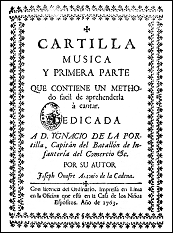
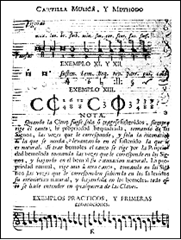
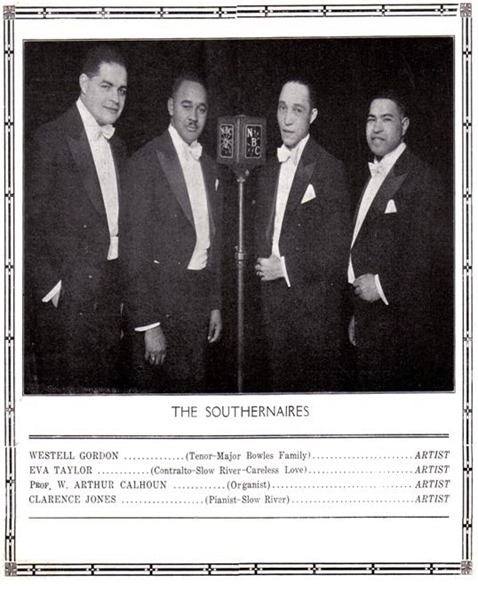
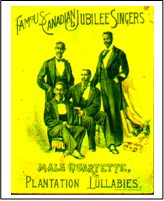
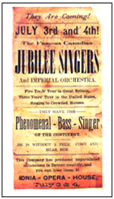
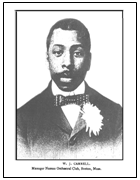
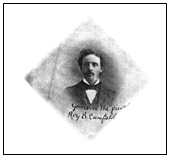

Recent Comments